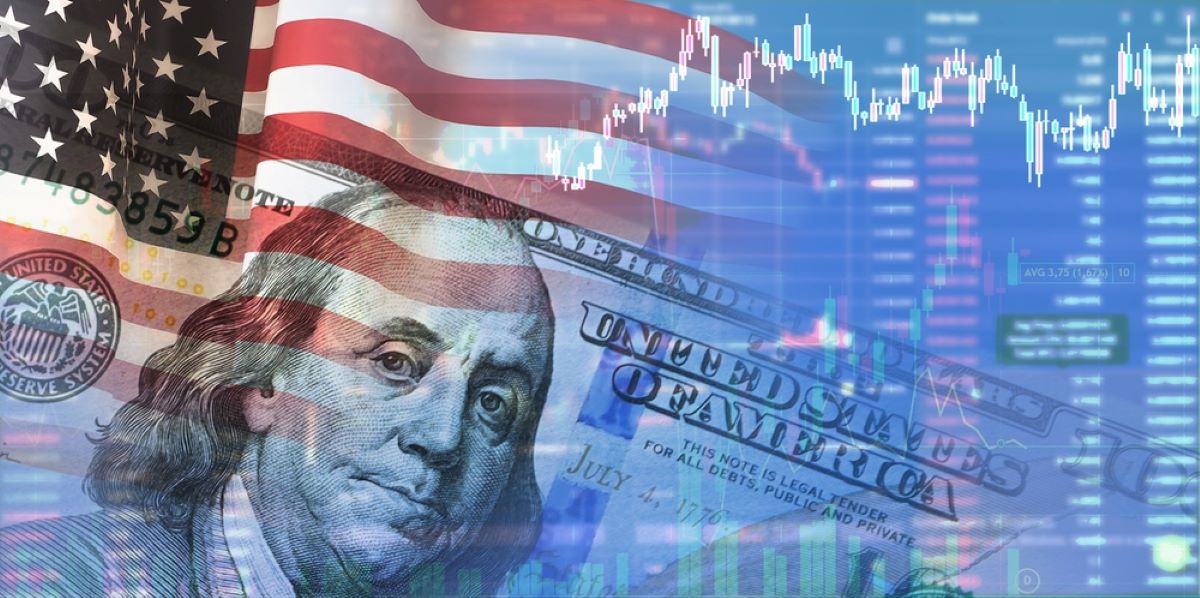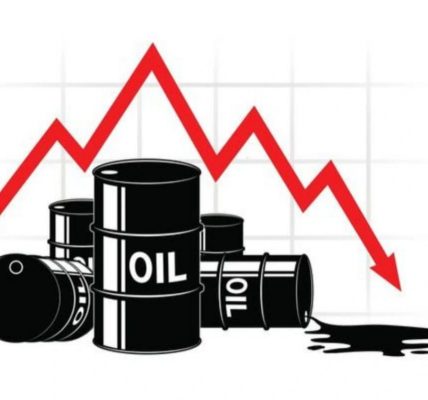When the Triple-A Falls, the Markets Follow: The U.S. at a Fiscal Crossroads
In May 2025, the United States saw its credit rating downgraded by the credit rating agency Moody’s from Aaa to Aa1, following Fitch (2023) and S&P (2011). Moody’s proved incredibly patient as it thus resolved the negative outlook it assigned back in 2011, when it is normally cleared within 2 years. The United States now lack a perfect grade from all of the 3 major credit rating bureaus. This historic shift marks the end of an era in which U.S. Treasury bonds were seen as the safest asset. Set aside the thought on how financial theories will adjust to the burial of the concept of Risk Free Rate, What signal was sent to the world? What are the underlying reasons of this decision, and what does it accomplish to the global economy, to the financial markets, and to American politics?
Why the downgrade?
Moody’s stated that the decision was influenced by a number of long-standing problems. First of all, public finances have been in long-term decline. “Over more than a decade, US federal debt has risen sharply due to continuous fiscal deficits” as Moody’s said in a statement. The US have been accumulating significant budget deficits year by year, and meanwhile expenditures have been rising (particularly social), and the successive tax cuts worsened the fiscal imbalance.
Moody’s also predicts the federal deficit is going to be close to 9% of GDP by 2035, compared with 6.4% in 2024. On top of that, Donald Trump’s recent declaration about his intent to continue the tax cuts begun in 2017 will be used to continue this trend. This will further solidify the long-term deficit dynamic, without offsetting increases in revenues.
Lastly, there is a significant increase of the weight of interests on the public debt. In the same statement Moody’s has noted that ” Federal interest payments are likely to absorb around 30% of revenue by 2035, up from about 18% in 2024″ (and from 9 % in 2021)”. This increase of interest rates makes the American debt even more unsustainable.
After the first warning sent by Moody’s in 2011, U.S. political leaders have failed to adopt meaningful fiscal reforms, regardless of how control of the House and Senate has shifted between democrats and republicans. In this case, the downgrade is a reflection of both the fiscal metrics and the dysfunction of the governance.
The Market Reaction
Moody’s announcement came in a renewed momentum of increased government yield starting in September 2024 over general worries on deficits. The yield on a 30-year Treasury bond was pushed to a high of 5.01% on the following Monday, reflecting investors’ loss of confidence in US Treasury bonds, traditionally considered as the world’s safest and most reliable debt. The dollar index has also fallen near 8% since January 2025, adding to the increased volatility on bond markets; particularly in emerging markets; that are heavily dollar-funded.
Credit ratings help investors gauge the financial risk entailed in lending to governments and businesses. Lower rating implies a higher risk, thus making the issuer’s cost of borrowing even greater. This means that in the Treasury case, debt is even more expensive to roll over. For companies higher key interest rates lead to higher cost of capital; and for households, that means more expensive mortgages, student loans, consumer credit. This loss of confidence doesn’t just affect Washington or Wall Street, but also has far-reaching consequences for the real economy.
Credit rating is also a geopolitical power lever. A weak dollar may incentivize certain countries (China, Iran, BRICS) to accelerate their de-dollarization policy.
Others stumbled first
Still, it is important to put this downgrade into perspective, especially in a global context. If presently the spotlight is on the US, the US is far from being the first country to have lost their Triple a rating.
Before them, France also lost it from 2012, and since then the note has even downgraded as a matter of routine. The result, was the increased cost of borrowing, and accrued dependance to the ECB. Now the debt level is high but increasing, and according to estimations from Olivier Blanchard, former chief economist at the IMF, France would have to find a $150bn in the current political environment to at least stabilize its debt to GDP Ratio, which is practically impossible.
Japan, rated AA since the 2000s, has a massive debt, but confidence is maintained thanks to a base of domestic savings, reported at 24.63% in 2023 by the World Bank national accounts data and OECD National Accounts data files. The key to Japan’s success, in a way, is also that their very high debt levels have been accompanied by economic stagnation, where the Central Bank keeps interest rates very low and does quantitative easing, buying up all of the debt. As a result, the debt doesn’t really enter the market, and the biggest debtor of the Japanese government is its own people.
Great-Britain, as for it, was downgraded in 2016, then in 2022, leading to an immediate increase of interest rates, and crisis of trust. The moral of the lessons to draw from all these examples is that it is not the level of the debt itself that brings a crisis, but the lack of a believable way out, and thus loss of confidence on the markets. Japan is managing because it has control over its currency and a large part of its debt is domestically held. That may not be so in America, mostly reliant on foreign investments.
Reform or Repeat
With this context in mind, we can envision three paths the United States might take in response to the downgrade.
- The first possible scenario is the pursuit of the current trajectory without any major reforms. The risk of going down this route would be getting into a spiral of interest rates, leading to a progressive loss of trust, and a bond crisis in the medium term.
Already, interest payments should reach $1.1 trillion in Q1 2025, exceeding both defense and Medicare spending. With Medicare expected to run out of funding by 2035, structural strain is growing. Even former US Fed Chair, and Treasury Secretary, Janet Yellen has acknowledged that a recession is now more likely than before.
- The second possible scenario would be the forced correction coming from the markets or other spheres of influence. Republican senators, within Trump’s own party in the US Senate, such as Rand Paul and Ron Johnson oppose the current budget bill, saying it could add as much as $4 trillion to the deficit, and criticize proposed spending cuts as insufficient.
Pressure from financial markets could force the US government to adopt a credible budget plan taking the form of higher taxes, reduced public spending, or a bipartisan agreement combining the two. However, in an election year, with Trump intending to further tax cuts, this route seems politically delicate.
- One other potential lever for redressing US public accounts would be to re-evaluate certain spending lines, particularly those linked to defense and federal social programs such as Medicare, Medicaid or Social Security. On the defense side, the U.S. spends nearly $850 billion a year on its military budget (around 3.1% of GDP in 2024, according to the Congressional Budget Office). Brookings Institution analysts, like Michael O’Hanlon, have identified targeted defense savings that could trim at least $10 billion a year without sacrificing readiness. But how $10 billion weight on a deficit of $1.9 trillion ?
On the other hand, cutting social spending, with programs such as Medicare or Medicaid that benefit tens of millions of vulnerable Americans, is a much more sensitive option. Cutting these programs would risk increasing precariousness and arousing strong political and social opposition, especially in a country without universal health coverage.
The loss of the third Triple A was written with the prior negative outlook and the prior actions taken by Fitch and S&P. So, it is not much of a new news but is a zeitgeist moment. It happens at a time when the inflation narrative pushing interest rates made room to fiscal sustainability and when the scene seems set for a worldwide race for financings. Whether the U.S. responds with reform, inaction, or rhetoric will determine not just its credit score, but its credibility in the global arena. With an unstoppable train, a key question is how long will the Federal Reserve be preserved from monetizing US Treasury debt if international skepticism remains.
References:
Ratings.Moodys.com. (n.d.). https://ratings.moodys.com/ratings-news/443154
Pilkington, E. (2025, May 25). Top Republicans threaten to block Trump’s spending bill if national debt is not reduced. The Guardian. https://www.theguardian.com/us-news/2025/may/25/trump-beautiful-bill-republicans
US 10 year Treasury Bond, chart, prices – FT.com. (2025, May 26). https://markets.ft.com/data/bonds/tearsheet/summary?s=US10YT
Indice US Dollar Index – Investing.com. (n.d.). Investing.com France. https://fr.investing.com/currencies/us-dollar-index
World Bank Open Data. (n.d.-b). World Bank Open Data. https://data.worldbank.org/indicator/NY.GDS.TOTL.ZS?locations=JP&most_recent_year_desc=false
O’Hanlon, M. E. (2025, February 21). Achieving “peace through strength” in the 2020s. Brookings. https://www.brookings.edu/articles/achieving-peace-through-strength-in-the-2020s/
Financial Times. (2025b, March 27). Why governments are “addicted” to debt | FT Film [Video]. YouTube. https://www.youtube.com/watch?v=n1jhoU9Mp_U






